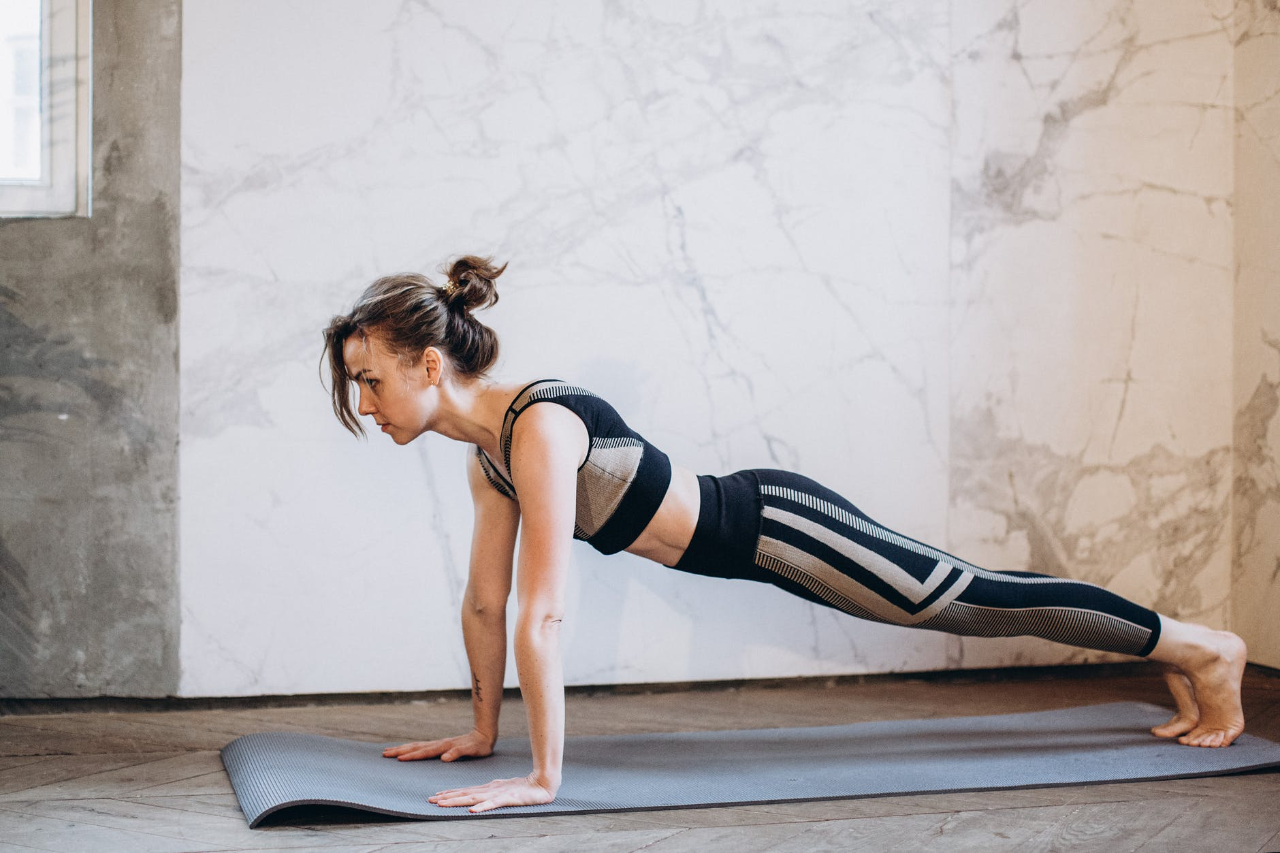
So, you don’t have access to a gym. Either there’s some worldwide plague, you’re on the road staying in a budget hotel that has a fitness center consisting of a treadmill, an old elliptical machine, and a deflated stability ball, or you just don’t have a gym membership nor do you want one. You can get a great, effective workout with your own body, 6′-8′ x 6′-8′ of space, and a little thing called gravity. Bodyweight workouts don’t have to be difficult to put one together.
Start by thinking of movements and body areas. When I put bodyweight (or any total body) workouts together, I usually begin with a difficult move that will, in fact, incorporate the total body; let’s say the ever-popular Burpee or a variation of it. Another might be the Bear Crawl (this one will also get some moans of displeasure from a fitness class). Then I’ll start thinking about different areas of the body and types of movement. I keep it simple: Lower Body Push/Pull, Upper Body Push/Pull, Core Anti-rotation/Rotation, a cardio move such as Jumping Jacks or Mountain Climbers. I’ll also do a Core Flexion/Extension.
Most times, I put together a circuit of 10 exercises and break it up into one-minute intervals of working and resting.
I prefer timed intervals rather than sets and reps so you can probably do more repetitions in a prescribed amount of time. It can really get the heart rate up. I stress that you should first make certain you can do the exercise properly before you pick up your pace. As I tell my clients, “Do them well, then do them often!”
Timed interval also keeps your time regimented. You know exactly how long your workout will last; 10, 20, 30 minutes, depending on how many rounds and then add a couple of minutes if you take a one-minute break in between rounds. It especially works great in a group setting where everybody is working together. I usually start a workout circuit that I put together at 30 seconds of work and 30 seconds of rest. Then, on my second round or the next time, I do this particular workout routine, I will increase the work intervals to 40 seconds and decrease the rest intervals to 20 seconds, thus increasing the intensity. Then I might do a 45/15 split and eventually go from one exercise to the next for a straight 10 minutes, resting as needed (and, I’ll probably need it).
So, we have a training program for timed intervals in which we try to make the intensity higher. What should we call this kind of training? I don’t know? We’ll think of something.
A typical workout might look like this one with some basic moves that I tried today:
Interval Circuit of 40/20 (Rest 1-2 minutes, Repeat 1-2X)
- Burpees (without push-up) = Total Body
- Alternating Lunges = Lower Body Push
- Wide-Grip Push-ups = Upper Body Push
- Renegade Rows = Core Anti-Rotation
- Jumping Jacks/Seal Jacks = Cardio
- Bicycles = Core Flexion and Rotation
- Bent Over Rows = Upper Body Pull
- Sumo Deadlifts = Lower Body Pull
- Bear Crawls = Total Body
- Mountain Climbers = Cardio
I sometimes may focus my workouts on specific body areas such as a routine that concentrates on the core, or one that is strictly cardiovascular. However, when you’re training to get your heart rate up, increase calories burned, and give an overall boost to your metabolism, a total body, time-specific interval program works great.
Another method is EMOM which stands for Every Minute On the Minute.
Take an exercise like the burpee. You would perform a specific number of reps, let’s say 10 within a minutes time. The faster you complete the required number of reps, the more rest you have until the next exercise and a new minute begins. So, if you complete the ten burpees in 34 seconds, you would have 26 seconds rest before you start the next exercise. Very effective.
When it comes to putting total bodyweight workouts together, think about what movements you would like to achieve, and be creative in the different exercises to choose from. Use variations to keep it challenging and interesting. For example, the push-up. Think of all the variations you could use – wide-grip, close-grip, off-set hands, one leg raised, spiderman, feet elevated, chest elevated, Hindu, side-to-side, dive bomber, etc.)
Some things to try.
People are often stuck on figuring how to work out the top of your shoulders, your back, and biceps when using bodyweight. For shoulders, I use a pike-up. I get into a regular push-up position and raise my hip towards the ceiling and dip my head between my shoulders. (Take a good look at your nice sneakers) Then, lower your head towards the flor by following down your arms. Tap the floor with the top of your head and press up. This is hard and your shoulders will be on fire. For my back, besides doing bent-over rows, try what I call elbow-ups. Lay down supinated on the floor. Place your arms at a 45-degree angle in relation to your body with the forearms pointed up. Press into the floor with your elbows, lifting your torso up, and squeeze your shoulders together. You’ll feel this in the back, your abs, and your neck muscles.
Enjoy putting together your own total body bodyweight workouts and the results that come with it including increased lean muscle, less fat, improved cardiovascular health, and improved appearance.



